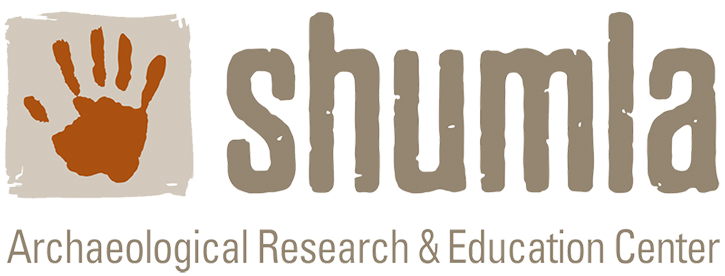Notes from an Enthusiastic Volunteer
As my tour guiding partner likes to say, “Kelly, you are an enthusiastic volunteer.” When Shumla preservation archaeologist Diana Radillo Rolón asked me to join them for a rock art documentation excursion I immediately said “Yes!” I love the Lower Pecos region and the defining rock art. I became hooked as soon as I saw the art over 15 years ago and have only become more engaged with time. I have been fortunate to volunteer with Shumla a few times over the years. In fact, I am now a member of the Shumla Board of Directors. (Persistent gifts of homemade candy every holiday season may have pushed my name up the list).
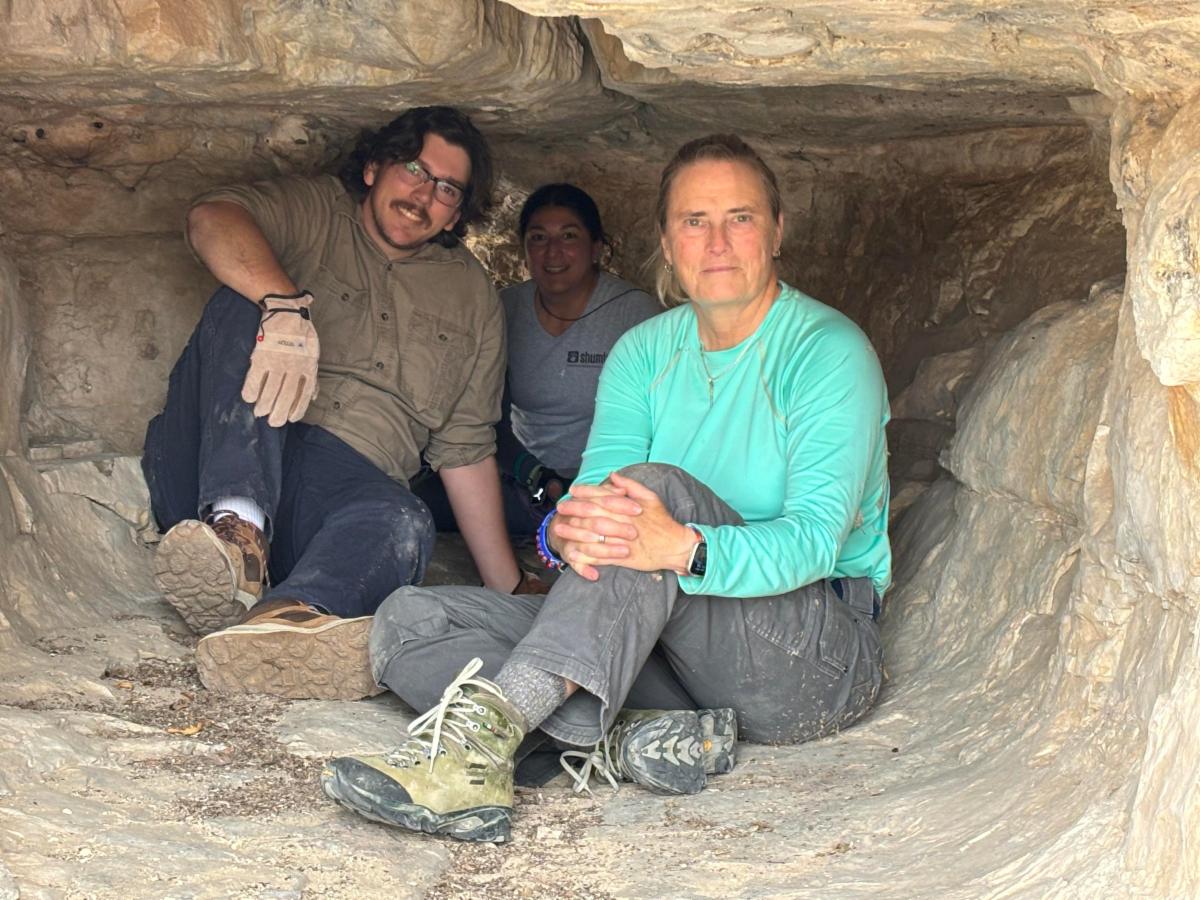
This excursion was to be a five-day visit to a ranch with one known rock art site. The site had not been included in the “Alexandria Project”, so Shumla was invited to come and document the site, adding it to the 250+ sites included in the Alexandria Project Archive.
Day One was pack-up and move-out. I drove and David Keim, another Shumla archaeologist, rode with me on the two-hour drive to the ranch. We chatted like old friends setting the tone for a week of gentle conversation, appreciation for life and its mysteries and great admiration for the region and its peoples.
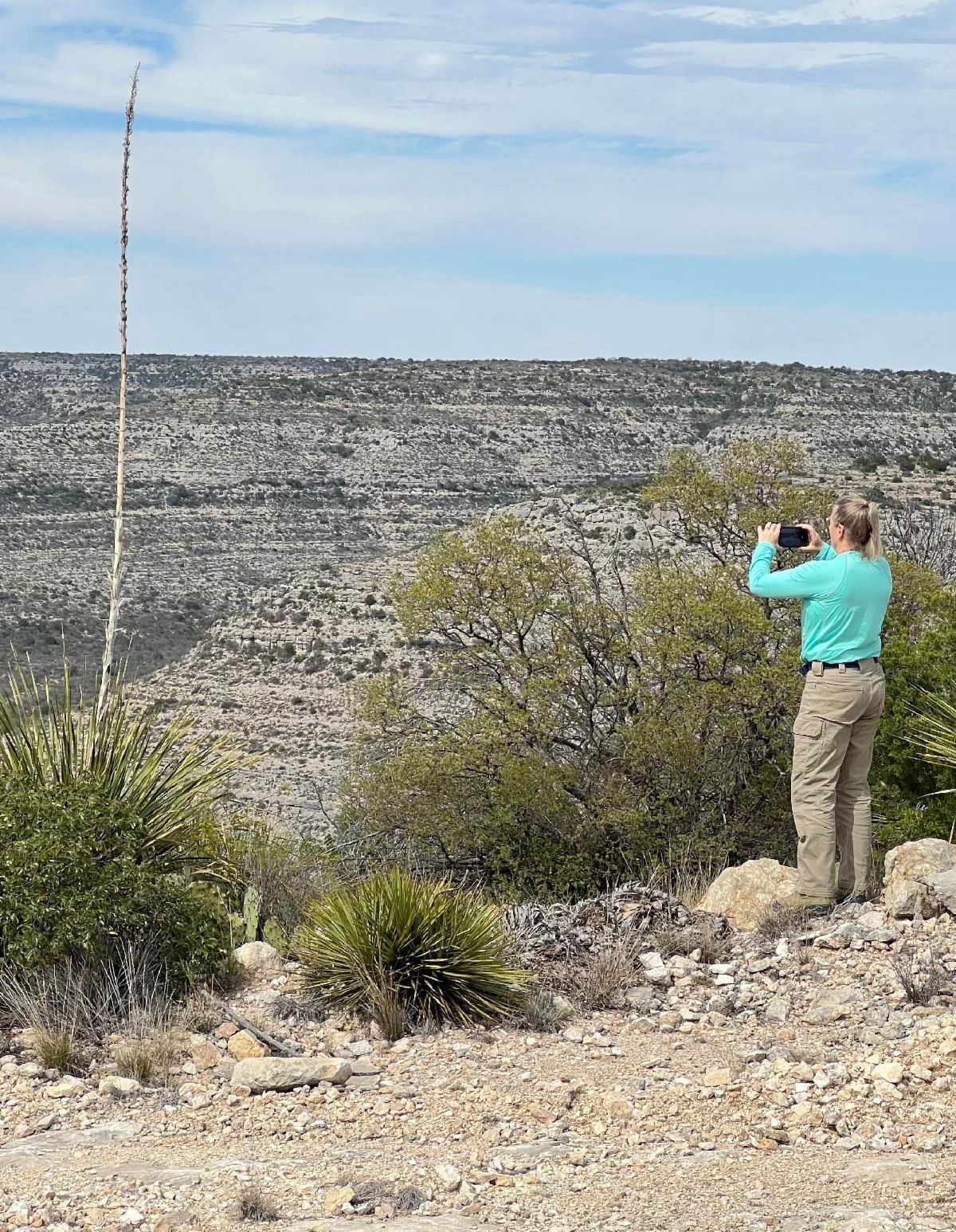
The ranch road was typically rough. It was limestone, crushed rock and steep declines into the canyon where the ranch headquarters and our home would be for the next four days. Shortly, we were escorted to the site by the ranch family to get a feel for the work ahead. Well, the Shumla team did. I was clueless and “happy as a clam” as my wife likes to say.
I loved how enthusiastic the family was about the rock art. They regaled us with two delicious dinners and several visits to the site over the week while we worked. They asked intriguing questions and shared their knowledge of local and Texas history. Two of them were pilots (as was I), so conversation slipped from rock art to flying for a large part of their visits. (All pilots do this all the time.)
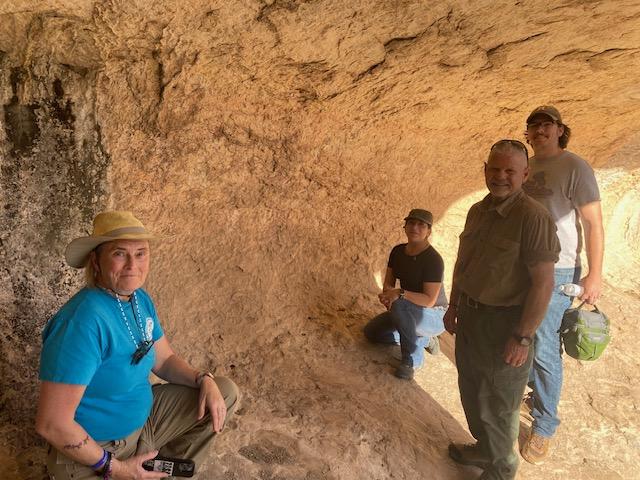
I learned so much watching the Shumla team plan and execute the documentation. I was tasked with drafting the Daily Recorder Notes, noting each action the team took. While there is a lot of work being done there is also a lot of “hurry up and wait.” Lucky for me I am a pro at that after spending 29 years in the military.
I was in my element with Daily Recorder Notes. I had a steep learning curve, however, as I grew to understand that the Structure from Motion (SfM) photogrammetry required taking pictures of every bit of the shelter (“Kelly you are in the picture!” was heard more than once.) Once done, these thousands of pictures are stitched together to make a 3D model of the site (hopefully without any of my body parts included).
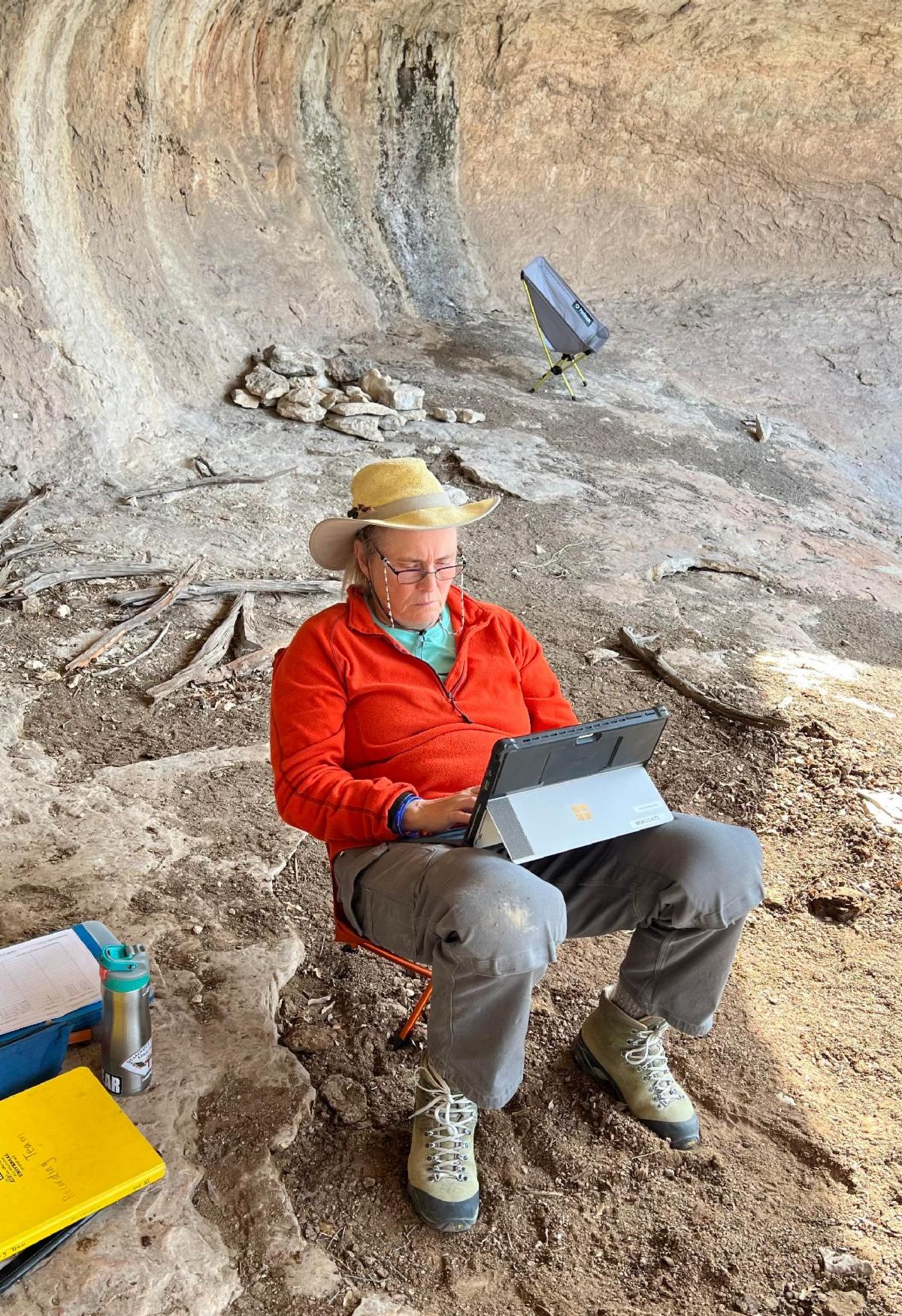
I was also tasked to locate any paint or markings on the stone floor. I used my measuring tape app on my phone to document where they were located. As a 65-year-old volunteer, this is as high tech as I get. That is, except for DStretch, the filter app Shumla uses to see paint that isn’t visible to the naked eye. At DStretch, I am a self-proclaimed “Queen”.
When there was no photography being done, I was able to look closely at the walls and ceiling and use the DStretch app to unveil paint hidden in the site. I discovered circles and rayed dots beneath a heavy layer of dust. I was again “happy as a clam” and content playing with DStretch for long stretches of time (eye roll).
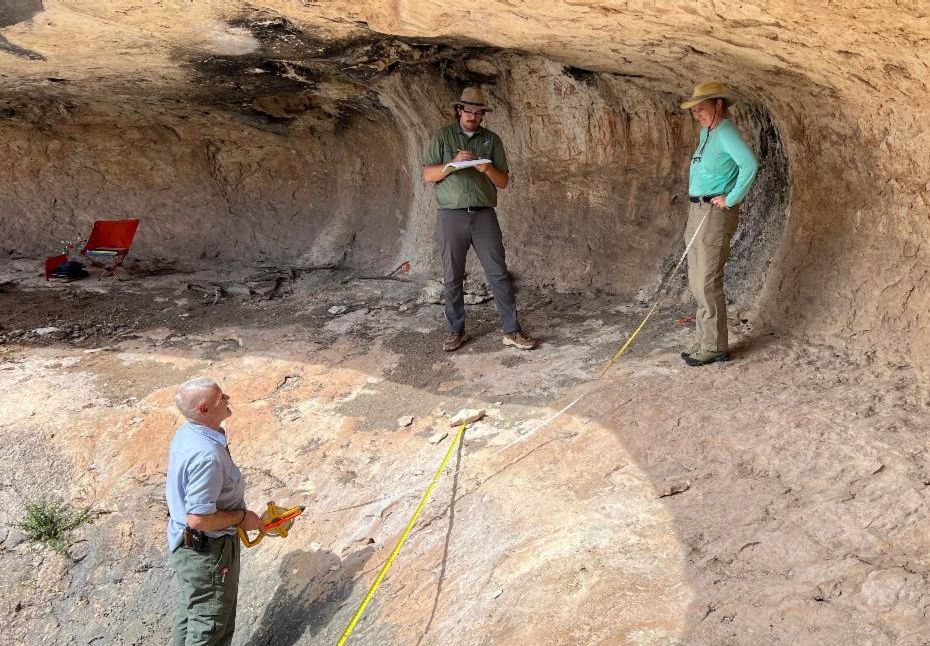
We didn’t see a lot of wildlife but were up at sunrise watching the dawn come over the canyon walls each morning as we drove to the site. One day heading back we met a rattlesnake slowly crossing the route home. We left it coiled and ready to strike while we sat, safe and secure, inside the pickup. Snake stories ensued, including the time a snake lay between me and my morning coffee…in my house (spoiler alert the snake, my house and I survived).
More pictures were taken using a gimble, a laser and a camera for the gigapan process. For these and for ease of access, Justin, Shumla Facilities Technician, removed tree and shrub limbs within the site. It is amazing what a handheld power saw can do. (You’ll be glad to hear we left no human limbs or digits behind.) There was one incident with a tree that will remain a team secret. Luckily, it only left scars on my ego and provided hysterical laughter for the others.
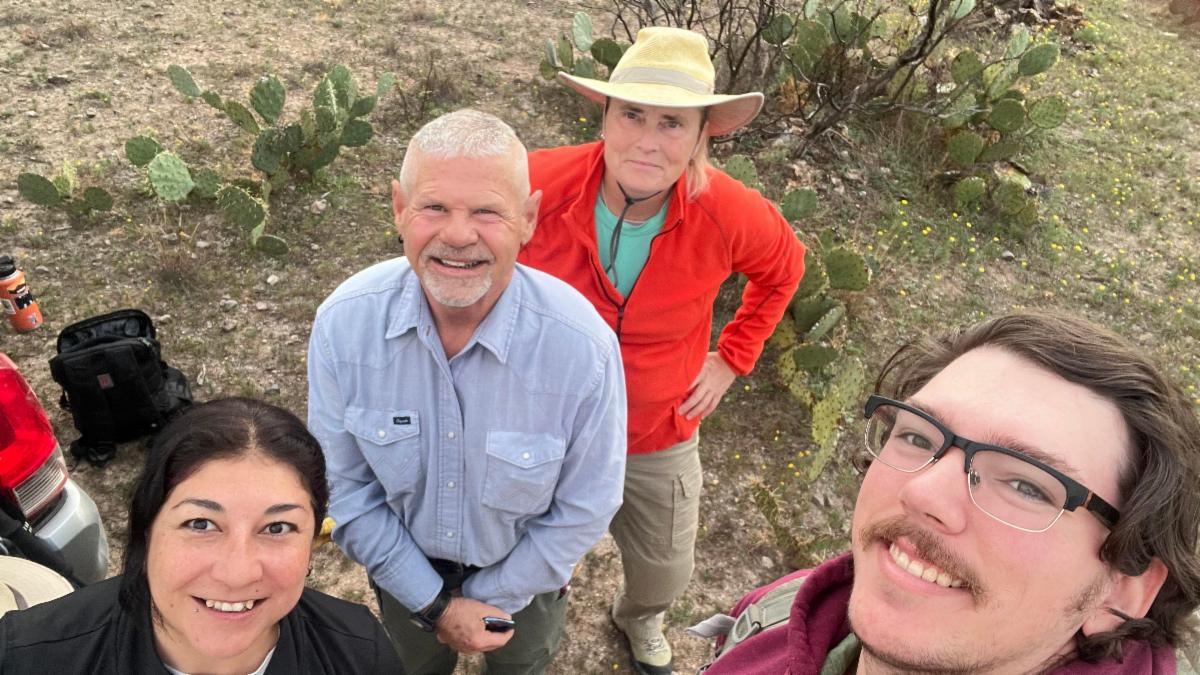
The final documentation process was to look at each panel and make a count of identifiable figures and motifs. To be counted as an anthropomorph, for example, a figure must have specific attributes and a specified number of them visible. This defined process prevents randomness and inconsistencies in the documentation. I was able to spot a couple of figures to include and felt like I earned my Shumla stripes on this trip.
I was sad to leave the site and the ranch. There is an almost visceral pull from this area that draws me back again and again. I am grateful to share in Shumla’s work in this magnificent canvas of canyonlands. The Lower Pecos offered up one more work of art and keeps its silent vigil over the mysteries of the Archaic peoples.
